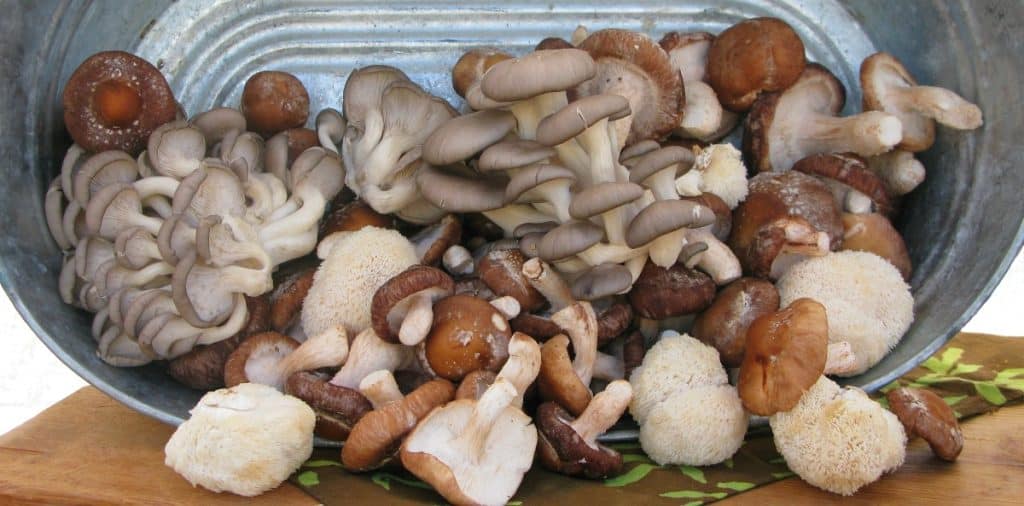An increasing number of people are growing mushrooms at home and enjoying the benefits of delicious and healthy fresh gourmet mushrooms.
After successfully growing a few mushrooms and discovering how rewarding it is, many consider increasing production and starting a small mushroom farm.
If you’re one of these people, you may wonder, “How much money can you make from mushrooms?”
The answer to this question is not straightforward, as several factors play a role.
But to give you a better idea, we gathered pricing information from online stores and the worldwide community of mushroom growers who have completed our Low Tech Mushroom Farming Course.
Read on to learn how much you can sell mushrooms for, which are the most profitable mushrooms to grow and how to get the best price.
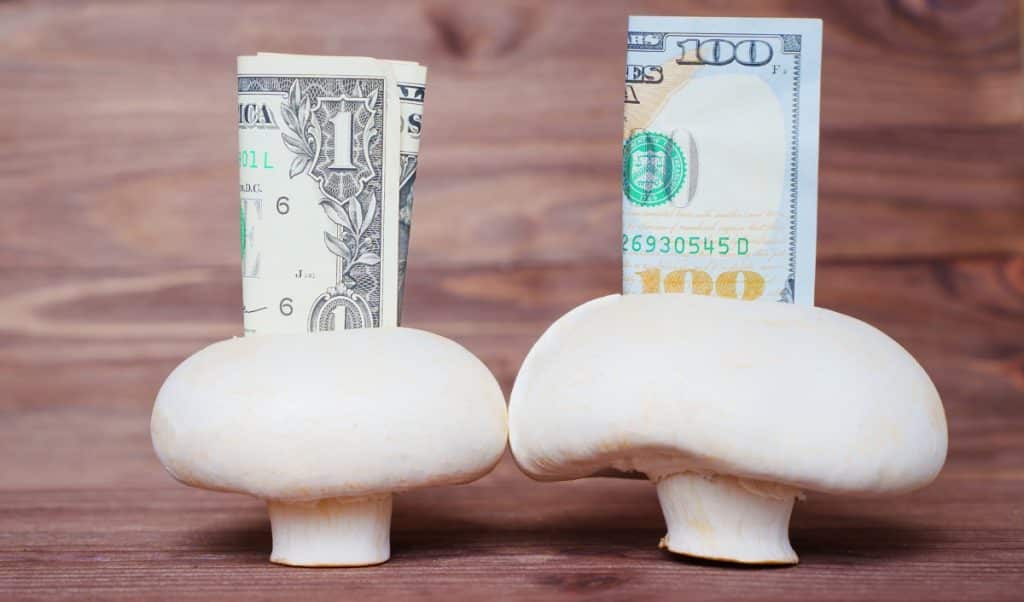
Are Mushrooms in High Demand?
Mushrooms are in high demand, and analysts expect the global mushroom market to grow at a compound annual growth rate of 9.7% from 2022 to 2030.
One of the main drivers of growth is the increasing number of people moving to a vegan diet who use mushrooms as a source of high-quality protein.
There is also an increase in health-conscious consumers who aim to eat as many organic or unprocessed foods as possible.
Mushrooms meet the needs of all these people, as they’re not only an unprocessed source of high-quality protein but also packed with beneficial nutrients like selenium, glutathione, ergothioneine and vitamin D.
They are also low in fat, cholesterol and carbs and high in dietary fiber that helps maintain gut health.
And their umami mushroom taste means they have rich meaty flavors and enhance the flavors of other foods in dishes.
Fresh mushrooms make up the largest segment of the market, but there are several other products made using mushrooms and mushroom mycelium, including:
- Dried edible and medicinal mushrooms
- Medicinal mushroom powders and capsules
- Medicinal mushroom tinctures
- Mushroom flavor enhancers
- Mycelium-based meat replacements
- Mycelium textiles
- Biodegradable Mycelium packaging
- Mushroom coffee
- Mushroom skin care products
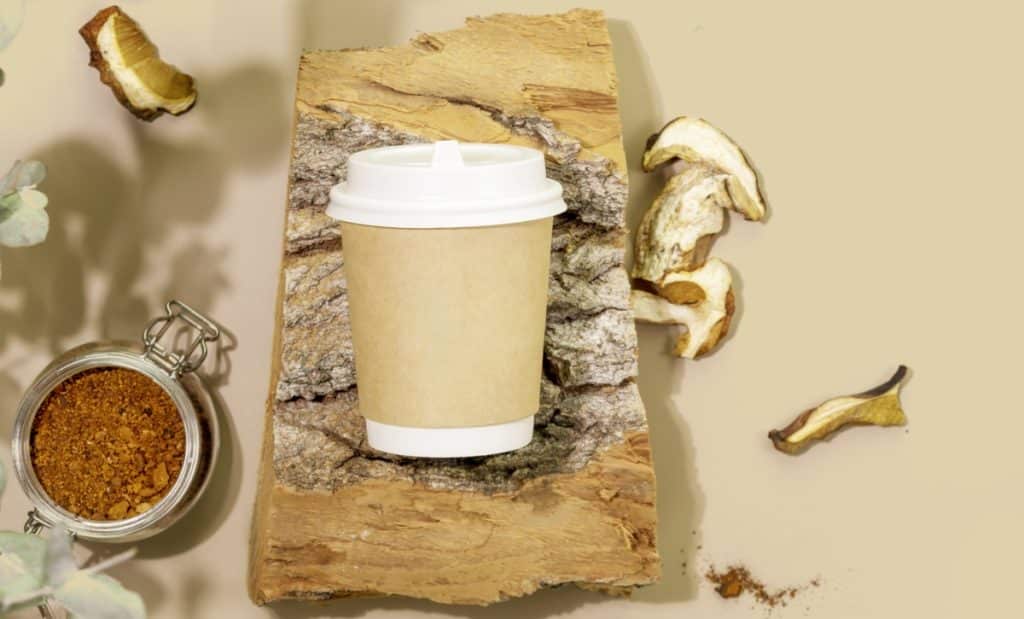
What Are Specialty Mushrooms?
The USDA (United States Department of Agriculture) defines specialty mushrooms as any species other than button, cremini and portobello mushrooms (Agricurus bisporus).
Oysters and shiitakes are the most common specialty mushrooms, but there are many other popular species, such as enoki, maitake, lion’s mane, reishi and wine cap mushrooms.
New mushroom farmers could choose to grow button mushrooms. But there’s a lot of competition as they’re already cultivated commercially worldwide and available in most grocery stores.
However, the increasing demand for fresh gourmet mushrooms means small-scale cultivation of easy-to-grow specialty mushrooms can be lucrative.
This article focuses on specialty mushroom species and how much you can expect to get for them.
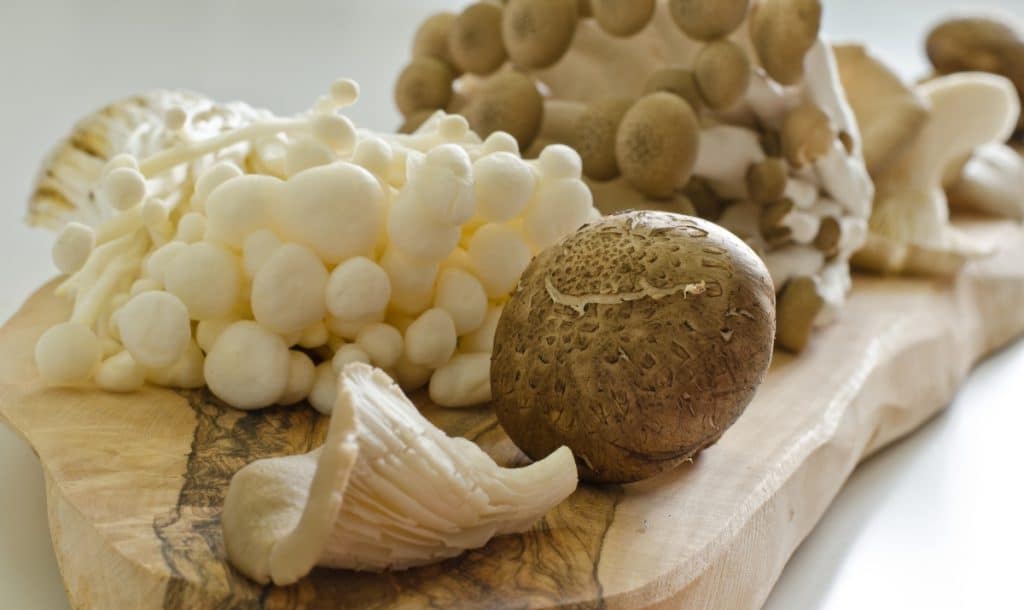
How Much Can You Sell Mushrooms For?
You can sell fresh specialty mushrooms for £9 to £35 per kg in the UK, $8 to $25 per lb in the USA and A$30 to A$80 per kg in Australia.
This may seem like a wide price range, but several factors play a role in how much you get, including:
- Where you sell your mushrooms – You’ll get a higher price at farmer’s markets selling direct to customers or direct to restaurants and lower selling via a wholesaler.
- The mushroom species being sold – Some species are challenging to grow, making them uncommon and more sought after, thus increasing their price.
- How commonly cultivated that variety is – This can impact your price positively and negatively. On the upside, there is usually an existing demand for commonly cultivated mushrooms, but oversupply can reduce their price.
- The level of competition from other growers selling the same variety – If there are a lot of growers in your area selling the same species, it may drive the prices down.
- Your Location – The prices are higher in urban areas than rural areas.
- Country of sale – for example, in Australia and New Zealand, prices are higher due to fewer imports. In the Netherlands, the prices are lower than in some other EU countries as there are many commercial producers. The price is also higher in countries with high wages due to the increased labor input costs.
5 Tips to Get the Best Price for Your Mushrooms
Regardless of the country you’re in or the type of mushrooms you’re selling, following the tips below will help you get the best price possible.
- Only sell fresh, high-quality mushrooms.
- Choose varieties that are not readily available in your area.
- Sell direct to the customer (markets, subscription schemes)
- Allocate time for marketing and create good branding to increase the perceived value.
- Get organic certification
What Is the Best Way to Sell Mushrooms?
When it comes to selling mushrooms, there’s no one size fits all solution, and the best way for you to sell your mushrooms will vary depending on the demand in your area.
This is one of the reasons it’s so important to do some market research before you begin.
Explore the options available in your area and learn what other local growers are doing and how they sell their mushrooms.
Are there popular farmers markets, specialized fresh produce stores, high-end restaurants or upmarket health stores in the area?
For new small-scale growers, selling directly to customers at farmer’s markets or via subscription schemes is often best as you get more for your mushrooms.
But, regular weekly orders from local restaurants or specialty stores are perfect for slightly larger mushroom farmers that can consistently produce larger quantities.
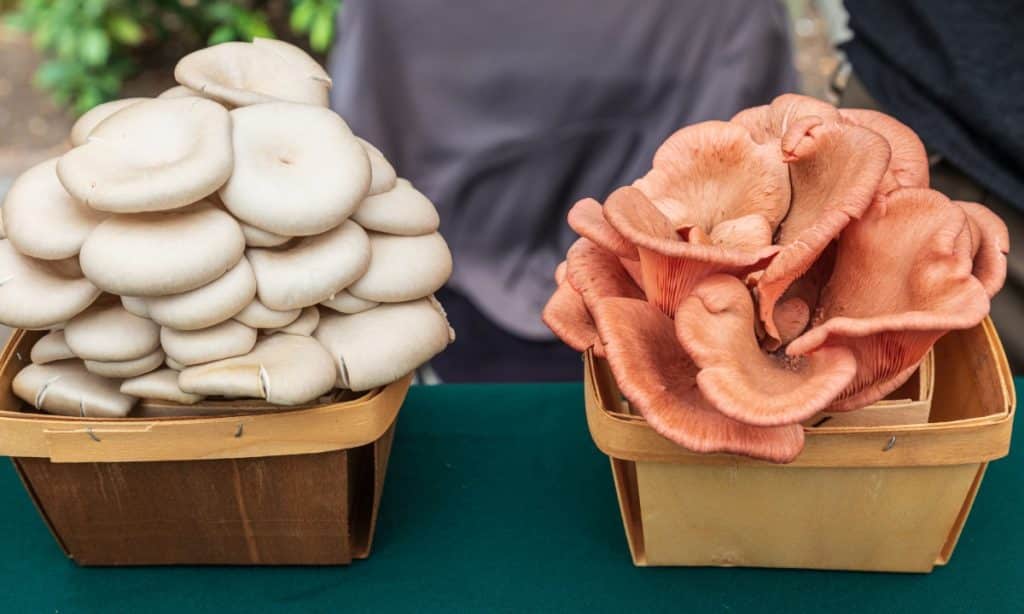
Where to Sell Your Mushrooms
Small-scale mushroom farmers have several options to choose from when it comes to places to sell mushrooms.
The best option will vary depending on your location and the type of mushrooms and add-on products you want to sell.
Here are some ideas to consider:
- Farmers markets
- Restaurants
- Grocery stores
- Specialty stores
- Direct to customers
Best Mushrooms to Grow For Profit
Below is a list of some of the most profitable specialty gourmet & medicinal mushrooms and how much they sell for.
The prices shown are for fresh, locally-produced mushrooms.
Oyster mushrooms (Pleurotus spp.)
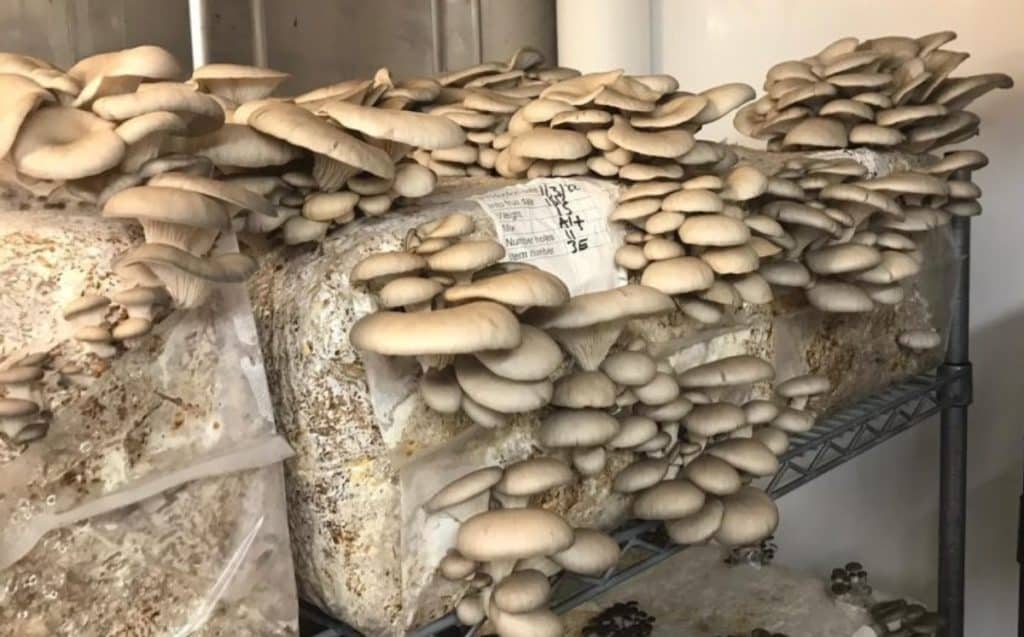
Oyster mushrooms are the second most cultivated species worldwide after button mushrooms and an excellent choice for small-scale mushroom cultivators.
Popular with consumers for their meaty texture and mild flavors, they’re proven sellers that can be very profitable.
In the UK, fresh oyster mushrooms sell for £9 to £25 per kg depending on the area and how you’re selling your oysters.
Generally, our members get between £12 and £20 per kg at farmer’s markets and £9 to £13 per kg selling to restaurants and specialty stores.
In the USA, fresh oyster mushrooms sell for $8 to $17 per lb. But organic oyster mushrooms sometimes go as high as $21 per lb.
In Australia, fresh oyster mushrooms sell for A$30 to A$60 per kg. In New Zealand, they range from NZ$50 to NZ$70 per kg.
Shiitake Mushrooms (Lentinula edodes)

Until recently, when oyster mushrooms overtook them, shiitake were the second most produced mushrooms worldwide; they now come in third.
Popular for their robust flavors and medicinal properties, shiitake mushrooms provide several opportunities for add-on products, and you can sell them fresh, dried or powdered.
In the UK, fresh shiitake mushrooms sell for £13 to £25 per kg depending on the area and end market, and organic shiitake mushrooms sell for up to £27 per kg.
In the USA, fresh shiitake mushrooms sell for $12 to $20 per lb, with most organic shiitakes selling for $20 per lb.
In Australia, fresh shiitake mushrooms sell for A$50 toA$80 per kg, and in New Zealand, they have a similar price, ranging from NZ$55 to NZ$80 per kg.
Lion’s Mane Mushrooms (Hericium erinaceus)

Although lion’s mane are delicious gourmet mushrooms with several culinary applications, they’re most sought after for their amazing medicinal properties.
These profitable medicinal mushrooms don’t have a long shelf life once harvested, so you’ll often need to order fresh lion’s mane directly from local farmers.
Lion’s mane mushrooms are often dried and powdered, sold as tinctures or combined with other ingredients to create new products like lion’s mane coffee or seasoning mixes.
In the UK, fresh lion’s mane mushrooms are sought after and sell for £18.50 to £35 per kg, with most growers having a backlog of orders.
In the USA, fresh lion’s mane mushrooms sell for $15 to $24 per lb and are usually pre-ordered for collection or shipped directly to clients to ensure fast delivery.
In Australia, fresh lion’s mane mushrooms sell for A$60 toA$80 per kg, but in New Zealand, growers are not allowed to grow lion’s mane mushrooms.
King Oyster Mushrooms (Pleurotus eryngii)
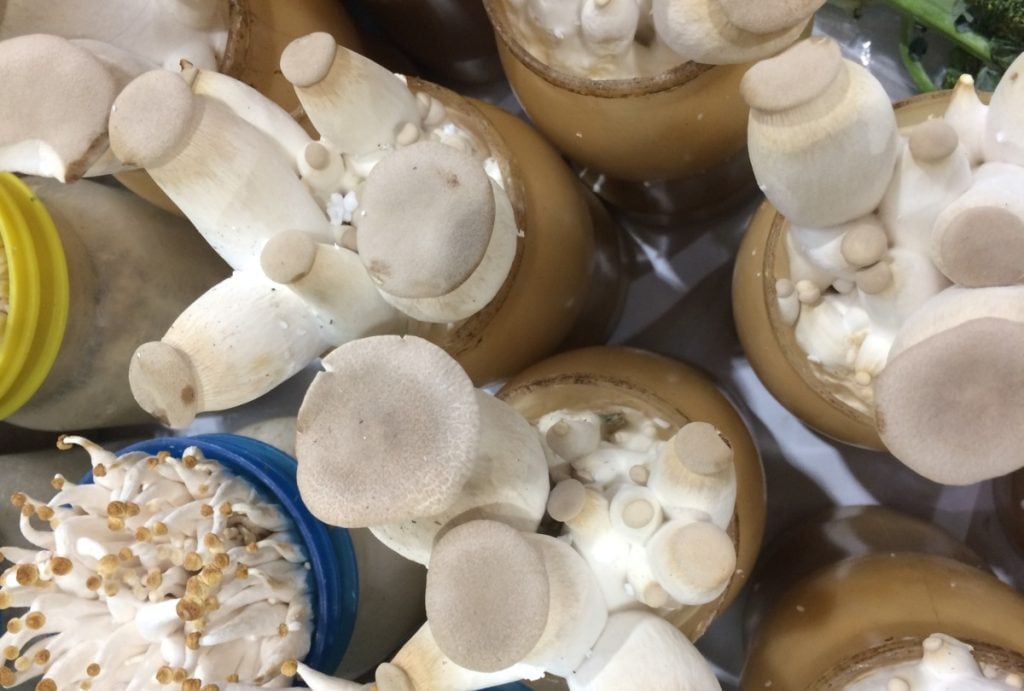
King oyster mushrooms are the largest species of oyster mushrooms and are prized by chefs for their thick meaty stems and culinary versatility.
Almost as easy to grow as other oysters, this impressive species is popular with small-scale mushroom growers, chefs and consumers.
In the UK, fresh king oysters sell for £14 to £25 per kg depending on the area and end market, and in the USA, they sell for $12 to $25 per lb.
In Australia, fresh king oysters sell for A$30 to A$60 per kg, but you won’t find them in New Zealand as this is another species that local mushroom farmers are not allowed to grow.
What Is The Most Profitable Mushroom to Sell?
The most profitable mushrooms to sell are not always the most expensive mushrooms.
Some of the most expensive mushrooms in the world are species that are challenging to cultivate and usually harvested in the wild, like truffles, morels and chanterelles.
And although growers are devising ways to cultivate fussier mushroom species, their unique requirements and the extra time, energy and labor required to grow them increases production costs.
The best mushrooms for small-scale production are profitable, easy-to-grow species like oysters and lion’s mane mushrooms.
In our opinion, oyster mushrooms are the most profitable mushrooms for beginners. There are several reasons for this, including:
- Oysters grow on various substrates, and it’s often possible to source local agricultural waste to use as a substrate, reducing transport costs.
- They’re hardy mushrooms that tolerate a wider range of temperatures than other species, meaning growers can often grow them at room temperatures saving energy.
- They’re one of the fastest-growing mushroom species and produce high yields in 3 to 4 weeks from start to finish.
- Their mild flavors make them easy to sell to people who want to move away from button mushroom varieties but are wary of changing.
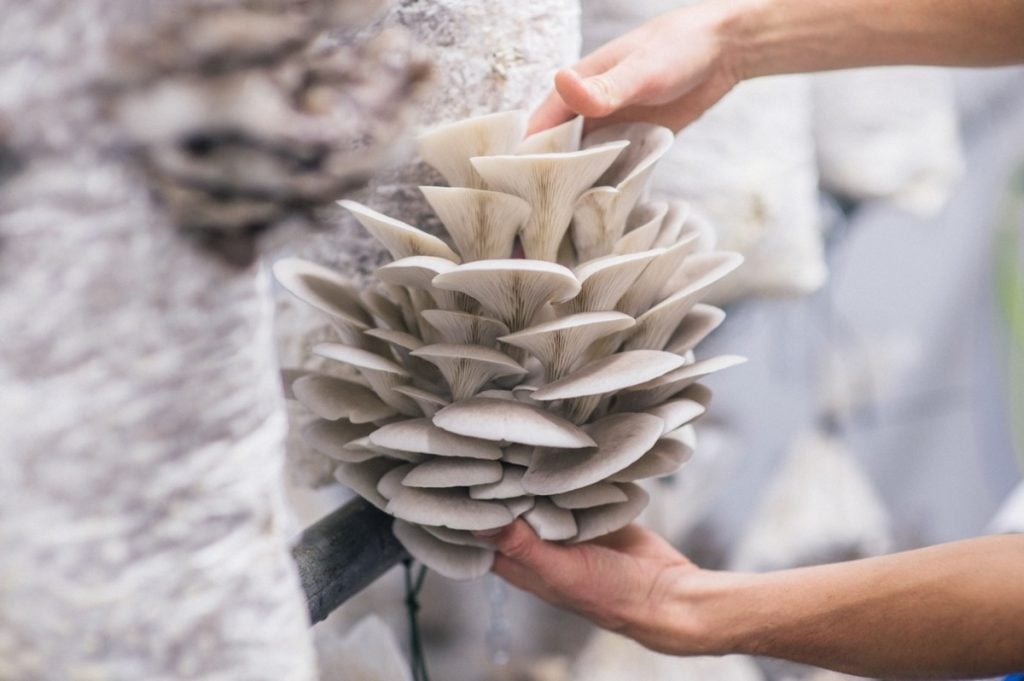
What Do You Need to Start a Mushroom Farm?
We love to see new small-scale mushroom farmers providing top-quality mushrooms to their local area. But we know the idea of starting a mushroom farm can feel a bit overwhelming.
So to help you get started, we’ve put together a bunch of free resources.
Our article on how to set up a low-tech mushroom farm takes you through the 5 main steps you’ll need to take, with some useful tips to get started.
And you’ll find our top 5 lessons for new mushroom growers in our article, “5 things I wish I knew before I started growing mushrooms for a living.”
To learn if a mushroom-growing business is right for you and what it costs, take a look at our mushroom farming business plan and mushroom-growing supplies list.
And we also have a free eBook & Video training that shows you low-tech ways to set up a small-scale mushroom farm.
The video below is another helpful resource that takes you through the top 10 business mistakes mushroom growers make and how to avoid them.
Final Thoughts
You don’t need lots of money or expensive equipment to set up a small-scale mushroom farm, and we have several resources to help you get started.
We recommend new growers start with oyster mushrooms and move on to other species once they have mastered all the steps in the mushroom growing process.
Depending on your location, fast-growing gourmet oyster mushrooms may be the most profitable species to grow, and you may decide to stick with them.
If you want to learn more, we offer an introductory mushroom cultivation course for people who want to grow mushrooms at home and a more in-depth course for those who want to set up a low-tech mushroom farm.
